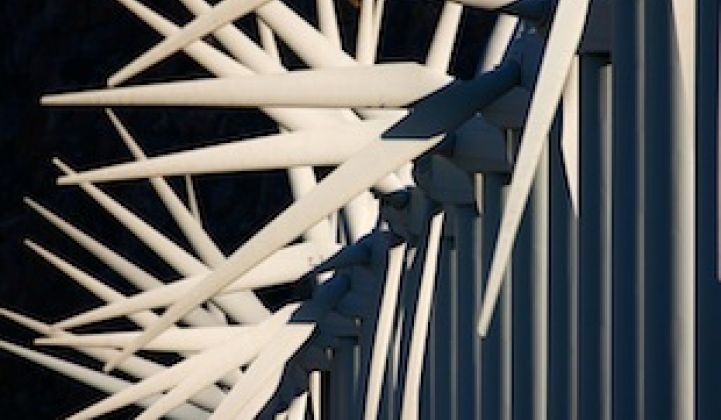The success of distributed solar generation is one of the surprising twists in the ongoing drama of shifting U.S. power markets -- and now the revolution is set to come to wind power.
United Wind started the road toward an anticipated half-billion dollars in financing by 2017 for distributed wind installations this week with the announcement that it has raised $25 million from tax equity investor GSG Energy Finance. The initial dollar amount, tiny in terms of the scale of potential market, is a "proof of concept" investment that will fund 100 to 150 installations of wind turbines with production capacity of less than 100 kilowatts.
“We’re seeking to replicate some of the success of the solar industry,” said United Wind CEO Russell Tencer, noting that the leasing model has worked well for that sector in driving installations and growth, even as utility-scale production of solar and wind power has failed to meet investor forecasts.
“The wind business was contracting just as solar financing for distributed generation was taking off” in the wake of a debate over ending the controversial production tax credit for wind, noted Tencer.
The GSG financing is a watershed both for United Wind and for the distributed wind industry, which has been held back by both the challenges of upfront costs and maintenance challenges. “Our WindLease platform enables the 99 percent [of property owners with land and wind resources] to monetize their wind resource” by saving up to half of their current utility bill cost over the twenty-year wind turbine lease term, Tencer said.
Tencer is a familiar face in the New York City energy scene, where he has led wind data firm Wind Analytics since founding it in 2007. Wind Analytics this year merged with California’s Talco, which runs a network of dealers and installers of small-scale wind turbines and assists with post-installation maintenance.
“Being in New York, with access to and experience in capital-raising, is a big advantage,” Tencer said.
The newly merged firm is focused on bringing distributed wind to customers in regions that enjoy the best wind resource, face the highest existing power costs and boast the best policies to encourage wind power installations. Right now, rural areas of New York state, Maryland, Oregon and Massachusetts are the company’s top four targets.
***
Editor's note: This article is reposted in its original form from Breaking Energy.



